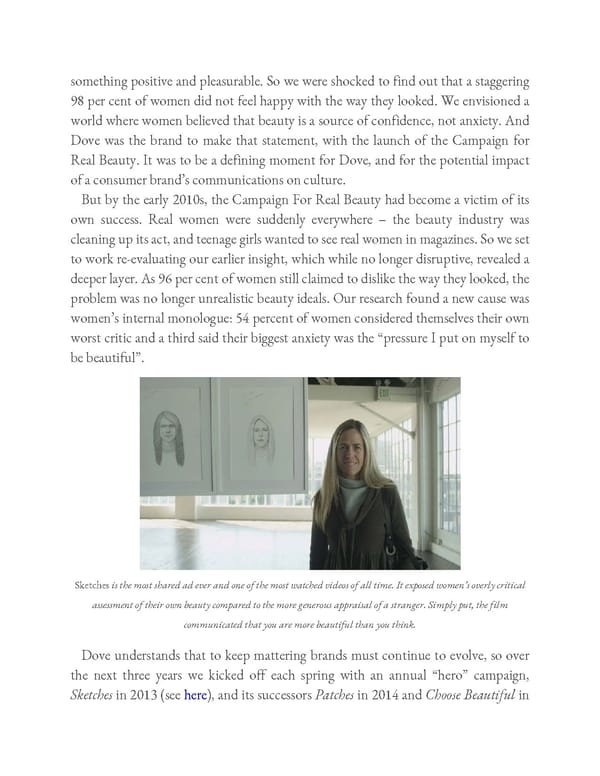something positive and pleasurable. So we were shocked to find out that a staggering 98 per cent of women did not feel happy with the way they looked. We envisioned a world where women believed that beauty is a source of confidence, not anxiety. And Dove was the brand to make that statement, with the launch of the Campaign for Real Beauty. It was to be a defining moment for Dove, and for the potential impact of a consumer brand’s communications on culture. But by the early 2010s, the Campaign For Real Beauty had become a victim of its own success. Real women were suddenly everywhere – the beauty industry was cleaning up its act, and teenage girls wanted to see real women in magazines. So we set to work re-evaluating our earlier insight, which while no longer disruptive, revealed a deeper layer. As 96 per cent of women still claimed to dislike the way they looked, the problem was no longer unrealistic beauty ideals. Our research found a new cause was women’s internal monologue: 54 percent of women considered themselves their own worst critic and a third said their biggest anxiety was the “pressure I put on myself to be beautiful”. Sketches is the most shared ad ever and one of the most watched videos of all time. It exposed women’s overly critical assessment of their own beauty compared to the more generous appraisal of a stranger. Simply put, the film communicated that you are more beautiful than you think. Dove understands that to keep mattering brands must continue to evolve, so over the next three years we kicked off each spring with an annual “hero” campaign, Sketches in 2013 (see here), and its successors Patches in 2014 and Choose Beautiful in
 Ogilvy on Advertising in the Digital Age Page 83 Page 85
Ogilvy on Advertising in the Digital Age Page 83 Page 85